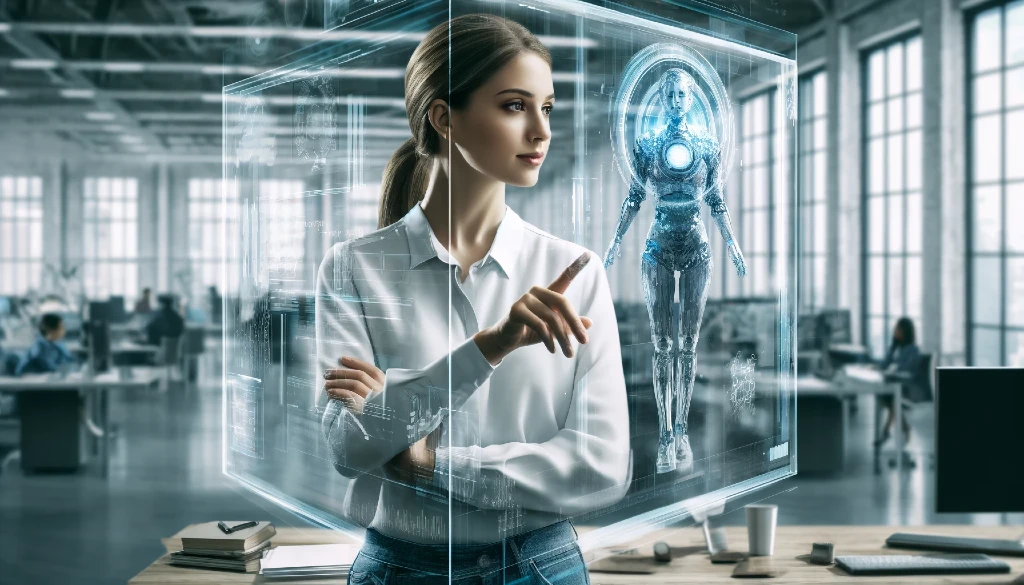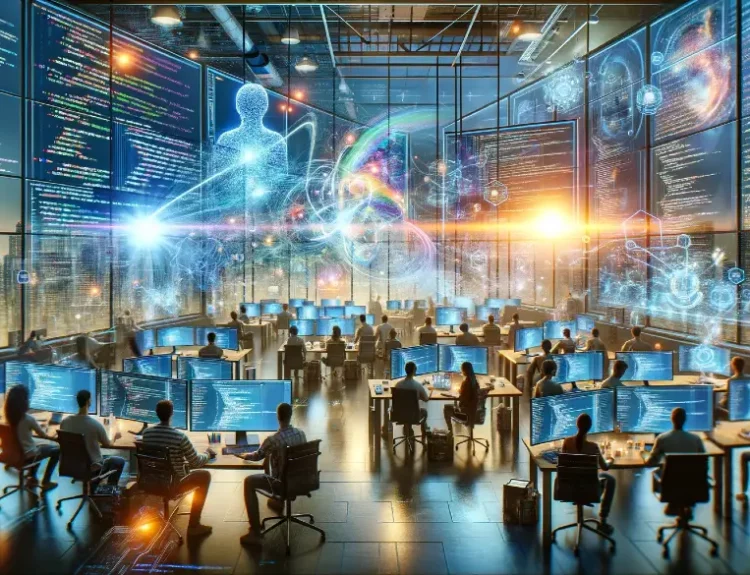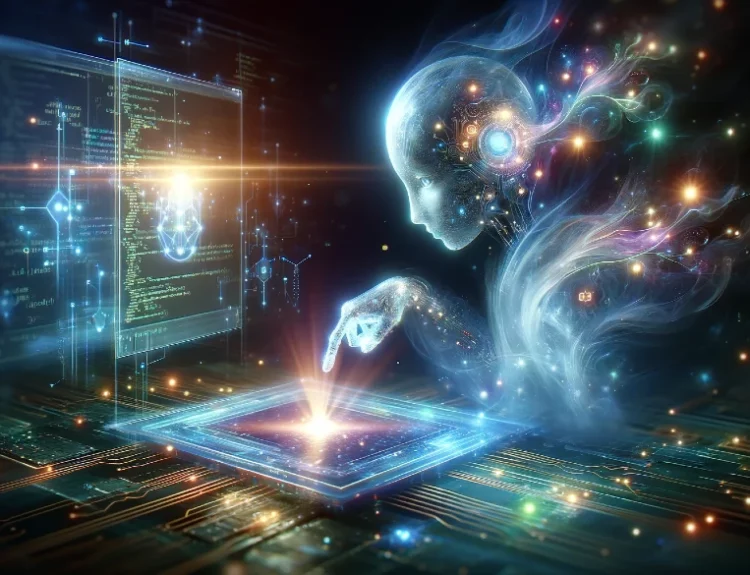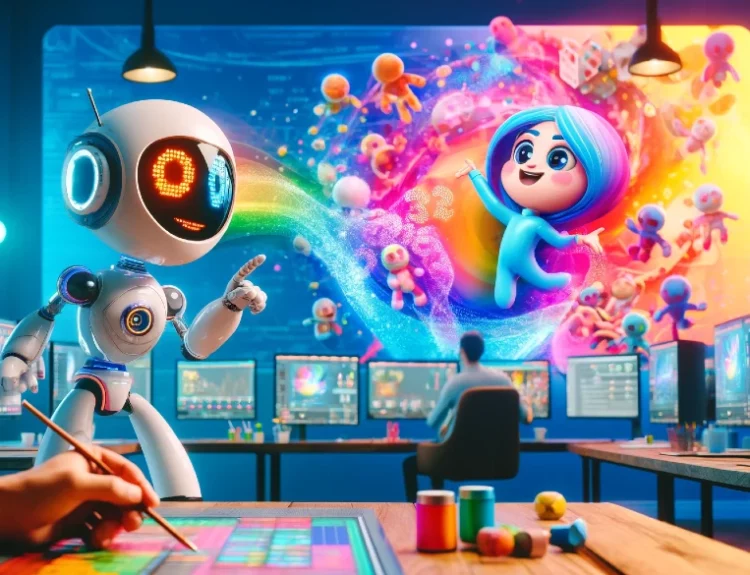Introduction
Imagine a world where machines can “see” and understand the visual world around them as well as humans, or even better. This is no longer science fiction, thanks to the revolutionary field of artificial intelligence (AI) in computer vision.
Our ability to see shapes our world. From recognizing faces to navigating our surroundings, vision is fundamental to how we interact with everything around us. Now, AI is unlocking this power for machines, leading to incredible advancements across various industries.
This blog delves into the fascinating world of AI computer vision engineers. These are the architects behind the scenes, building and fine-tuning the AI algorithms that enable machines to “see” and interpret visual data.
We’ll explore the magic behind AI-driven vision engineering, from the powerful algorithms like deep learning to the real-world applications that are transforming our lives. We’ll also discuss the exciting future of this field, including cutting-edge advancements in AI technology and the evolving role of AI computer vision engineers.
So, buckle up and get ready to master vision with the power of AI!
The Power of AI in Computer Vision
The human brain is a marvel of visual processing. However, replicating this ability in machines has long been a challenge. Enter AI, particularly the power of deep learning algorithms, which have revolutionized the field of computer vision.
Deep learning mimics the structure and function of the human brain, enabling computers to learn and improve at tasks like object detection, image recognition, and facial recognition. These advancements are fueling a wave of innovation in:
- AI applications in image processing:
- Anomaly detection: AI vision can identify unusual patterns in images, helping companies detect defects in products during manufacturing or suspicious activity in security footage.
- Image segmentation: AI can separate objects from their background, allowing for more accurate tasks like medical image analysis or content moderation on social media platforms.
- Enhancing existing systems with AI vision technology: Across various sectors, AI vision is transforming how machines perceive and interact with the world. Here are some examples:
- Manufacturing: AI-powered robots with visual capabilities can perform complex assembly tasks with greater precision and efficiency.
- Security: Facial recognition systems powered by AI can enhance security measures at airports or other restricted areas.
- Retail: AI vision can analyze customer behavior in stores, optimize product placement, and even personalize the shopping experience.
These are just a few examples, and the possibilities are truly endless. As AI algorithms continue to evolve and become more sophisticated, we can expect even more groundbreaking applications of computer vision in the years to come.
The Future of AI in Computer Vision Engineering
The field of AI computer vision engineering is rapidly evolving, and the future holds exciting possibilities. Here’s a glimpse into what lies ahead:
- Advanced AI technology: We’re on the cusp of groundbreaking advancements in AI algorithms that will push the boundaries of computer vision.
- Explainable AI (XAI): As AI models become more complex, XAI aims to make their decision-making processes transparent and understandable. This will be crucial for building trust in AI-powered vision systems.
- Neuromorphic computing: Inspired by the human brain, neuromorphic chips promise faster processing and lower power consumption for AI applications, leading to more efficient and powerful computer vision systems.
- The ethical considerations of AI vision: As AI vision becomes more ubiquitous, ethical considerations become paramount. We need to address potential biases in training data that can lead to discriminatory outcomes in facial recognition or other applications. Additionally, privacy concerns surrounding data collection and usage will need to be carefully addressed.
- The evolving role of AI computer vision engineers: The skillset of AI computer vision engineers will continue to evolve. In addition to expertise in deep learning and computer vision algorithms, engineers will need to be well-versed in areas like XAI, ethical considerations, and potentially even collaborate with specialists in fields like neuroscience or psychology to create more human-centric AI vision systems.
The future of AI computer vision engineering is a collaborative effort, and success will depend on fostering innovation while ensuring responsible development and deployment of this powerful technology.
Conclusion
The world of AI computer vision engineering is brimming with potential, and the future holds the promise of even more revolutionary advancements. These AI-powered vision systems have the power to transform countless industries, improve our daily lives, and unlock new possibilities we can only begin to imagine.
However, the ethical considerations and responsible development of AI vision are crucial aspects that cannot be ignored. As we move forward, collaboration and a commitment to human-centric AI will be key to ensuring this technology benefits all of us.
Ready to join the AI vision revolution? Verdict is a platform dedicated to building human-centric AI through real-world interactions and the collective knowledge of its community. By contributing data and insights on Verdict, you can play a role in shaping the future of AI vision technology.
Want to delve deeper into the exciting world of AI? Explore our blog page for more insightful reads like “AI-Powered Solutions: AI-Computer Repair” and “Navigating AI in Computer Science Degrees: Your Guide to Success,” and discover the vast potential of AI across various fields.
Together, let’s build a future where AI vision empowers us to see the world in new and remarkable ways!










